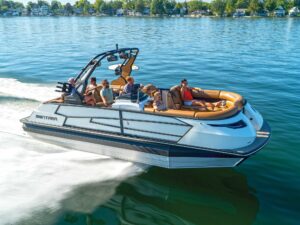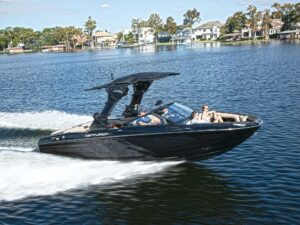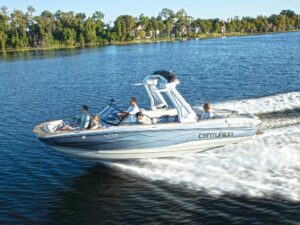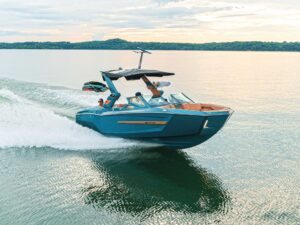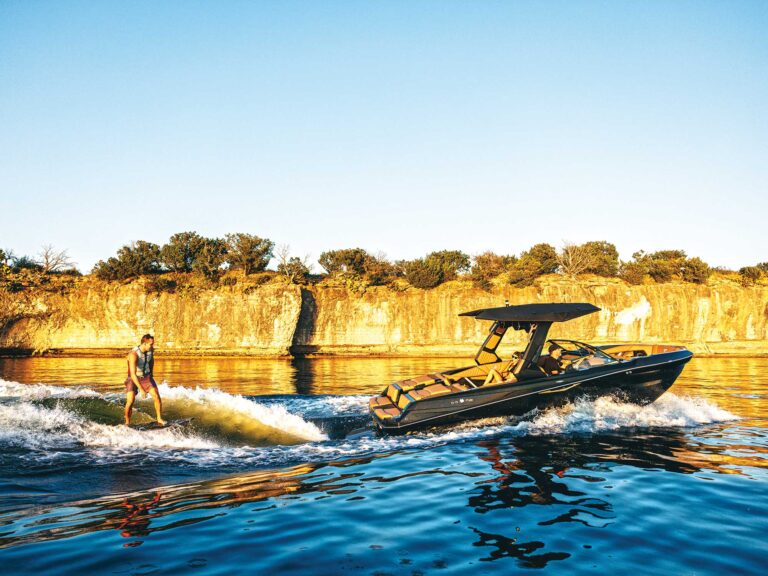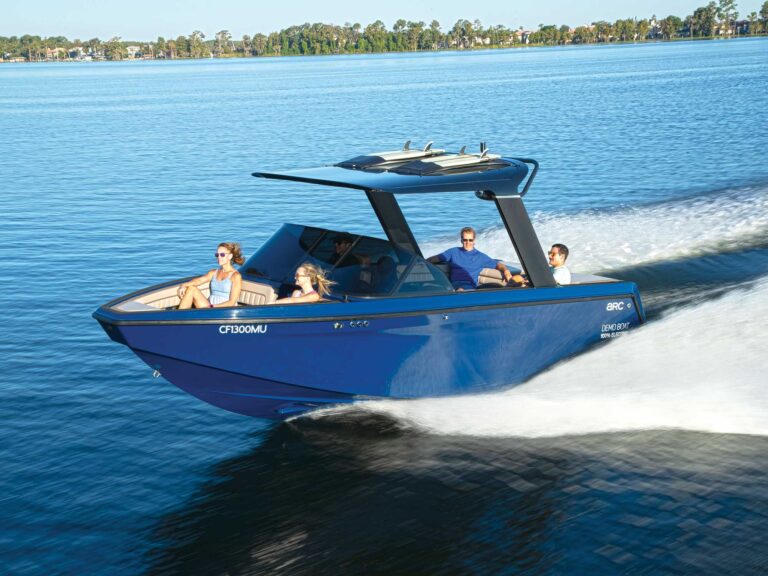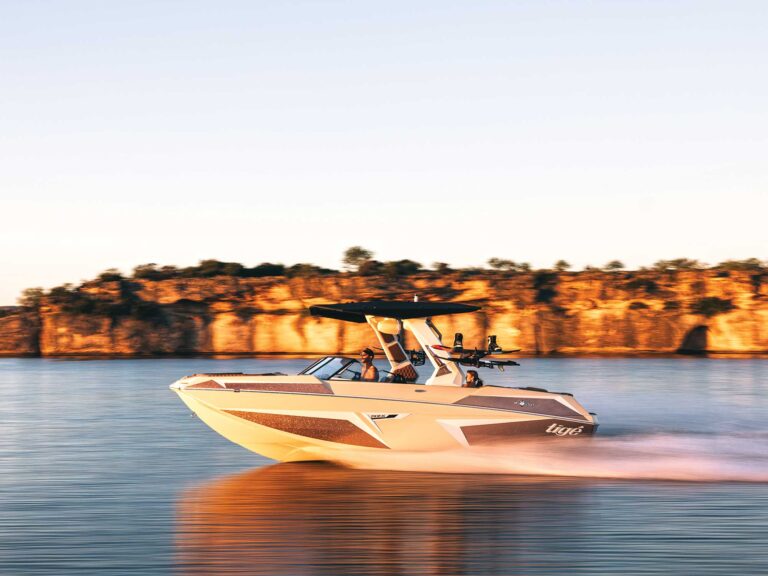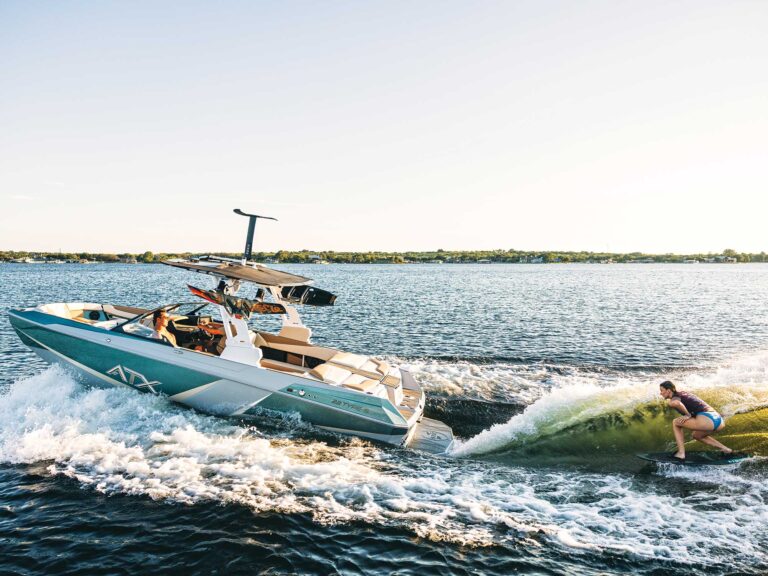
Overview
In nautical terms, it’s called a plumb bow, but after one look at the Axopar 28 Cabin’s sharp stem, you’d be more inclined to call it a carving knife. Axopar builds some of the most unique-looking boats in the world, but all of its European form is designed to maximize its function, and all of those style points led to great performance during our test.

The Finnish builder designed the Axopar line to closely mimic the ride of a RIB, without adding on the inflatable collar. The 28 Cabin has a low center of gravity, with low freeboard and a hull form that both enhance its seakeeping and overall efficiency. That eye-catching plumb bow sharpens to a 60-degree angle, hence its knifelike ability to slice through waves and chop. Moving aft, the Axopar incorporates twin steps to provide a more level running attitude. The twin steps and low overall weight result in an efficiency that allows it to achieve comparable speeds to similarly sized boats with less power, and get away with a smaller fuel tank—the design spiral in action. At the transom, deadrise tapers to 21 degrees.

While the looks draw eyes from the docks, Axopar says one of the most important design elements on the boat is the double chines. Adding a second chine above the traditional hard chine at the waterline both improves stability and adds lift, similar to the way an inflatable or foam collar works on a RIB.

Engine
How did it all work? On test day, we recorded a top-end of 54.3 mph with twin 200 hp Mercury FourStroke V-6 outboards on the transom. But more importantly, we took on a stout head sea running outside the inlet, and the 28 Cabin performed admirably. We pushed the throttles above the comfort level and waited for the bone-jarring pounding that never came. The boat performed equally well in following and quartering seas, and felt graceful during hard-over turns at speed.

Interior and Accessories
Abovedecks, Axopar uses a modular system to build its 28 into a cabin, a T-top center-console, or an open crew-boat format. The enclosed pilothouse features twin captain’s chairs at the helm, with flip-up bolsters and a sofa behind. Visibility at the helm proved as excellent as the ride.
How We Tested
- Engines: Twin 200 hp Mercury FourStroke V-6
- Drive/Props: Outboard/15 1/4″ x 21″ 3-blade Enertia stainless steel
- Gear Ratio: 1.85:1 Fuel Load: 74 gal. Water on Board: 0 gal. Crew Weight: 580 lb.
High Points
- Twin-stepped hull with double chines and plumb bow provides a great ride.
- Open transom design helps this boat quickly shed water.
- Helm seats can be rotated fully aft to create a cabin conversation pit at anchor.
Low Points
- Narrow bow precludes the wraparound seating common in big bowriders.
- We wouldn’t mind more seating in the aft cockpit.
Toughest Competitor
While there is no direct competitor, try a RIB or a dual-console such as the Cobia 280 DC ($168,452 with twin 200 hp Yamaha outboards).
Pricing and Specs
| Price: | $170,000 (as tested) |
|---|---|
| LOA: | 28’8″ |
| Beam: | 9’8″ |
| Draft (max): | 2’8″ |
| Displacement (approx.): | 4,277 lb. |
| Transom Deadrise: | 21 degrees |
| Bridge Clearance: | 9’3″ |
| Fuel Capacity: | 74 gal. |
| Max Horsepower: | 400 |
| Available Power: | Single or twin Mercury gasoline outboards |
Speed, Efficiency, Operation
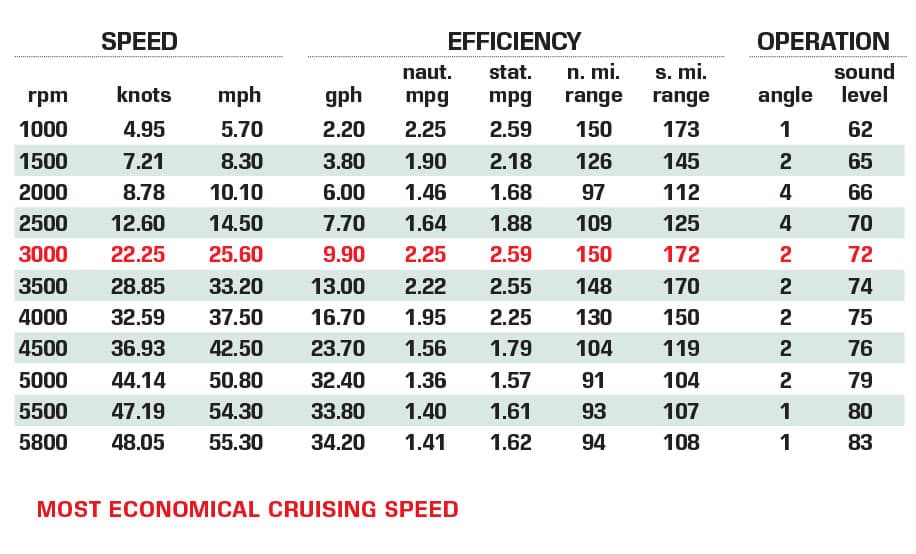
Axopar via Nautical Ventures – Dania, Florida; 954-926-5250; axopar.fi

